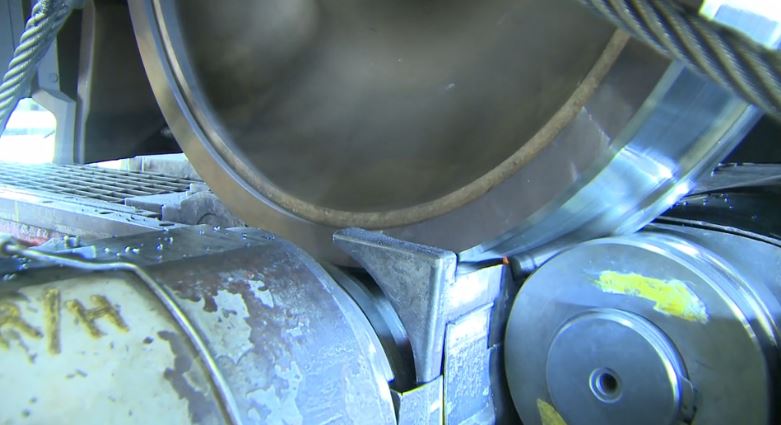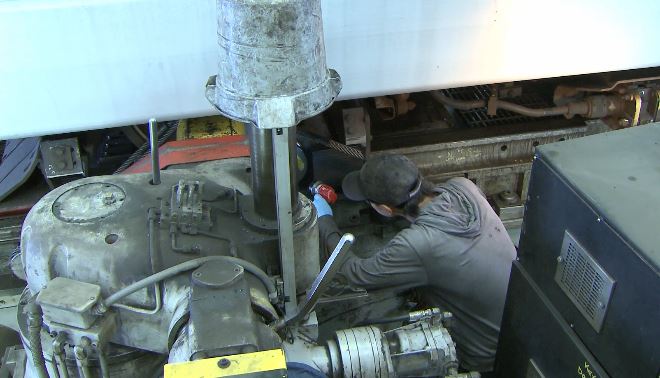The science of the screech: Big progress for BART's efforts to lower the volume of your ride
BART has reached a milestone in its efforts to bring riders a quieter ride. Now more than half of BART’s train cars have been outfitted with an advanced wheel profile that reduces both noise and wear on the rail. On the latest edition of our podcast series “Hidden Tracks: Stories from BART” we’re focusing on the science of screech. The new wheel profile has been years in the making and one of our managing engineers talks in-depth about how the design was developed and what’s next for BART’s plan to bring a quieter ride to our passengers.
Read the transcript below:
HOST: “It’s a familiar sound for BART riders.”
SCREECH NATS
HOST: “But now we have the kind of news on noise that many have been waiting for.”
GRINDING NATS
HOST: “That’s the sweet sound of grinding. In this case the grinding of wheels on our legacy cars to implement a new profile that reduces wear AND even more importantly knocks some decibels off the BART screech.
BART has hit a milestone with its wheel grinding efforts. Now more than half of the fleet has the advanced profile.
On this edition of “Hidden Tracks: Stories from BART” we’ll learn all about the new wheel profile and BART’s long term plan to bring you a quieter ride.
And I’m now speaking with Ben Holland, a managing engineer here at BART and I really appreciate you taking some time out to talk about the science of the screech. It’s a topic a lot of people care about.”
HOLLAND: “Certainly Chris. We’re very excited about this new technology and how well so far it’s done. So excited to give you some information about where we’re at with it.”
HOST: “You know there’s a lot going on with this effort. It’s something the typical rider really does notice, how loud the train can be. BART is starting to make some real progress when it comes to this and it has a lot to do with the wheel profile. I think, first of all, for a lot of folks they’re not going to necessarily know what a real profile is. What is that and how does it come into play when we’re trying to provide a quieter ride.”
HOLLAND: “So Chris, I would just like to clarify that the trains wheels and the rails interact together as a system. The effort to quiet the BART system is really a partnership between our railcar department and our track department. That means the shape of the wheel and the shape of the railhead together are critical to ensuring safe and quiet operation. To answer the question, the original BART wheel profile, you can consider it like a cylindrical section of pipe. While the new profile is tapered, like a curved barrel, if you could imagine that the cylinder shape pipe rolling down a slight incline it really just wants to go straight. It doesn’t want to turn to the left, it doesn’t want to turn to the right, it just wants to go straight. That’s what our original BART wheel is like. Whenever it would come to a turn the wheel flange is what makes that wheel turn and go around the curve and that results in a lot of extra wear. The new wheel shape that we call the BT-3 Wheel Profile tends to want to self-center between the rails and it even steers in the turns so the result is much less wear and noticeably less noise. This is all easier said than done. It typically takes a couple of hours to cut all eight wheels to the new profile on a car using our specialized wheel cutting machines and also, we’ve implemented a new rail-grinding program to make sure that we get the most benefit from the new wheel profile.
HOST: “And as you mentioned one really does go with the other it’s not just about the wheel the rail is also a critical part of this. But speaking about the wheel and this new profile and the grinding that’s going on with the wheels to get this profile, is this the sort of thing that’s noticeable on the wheel. In other words, does it look different once it goes through that process?”
HOLLAND: “The shape of the wheel, if you still want to look at the cross section I guess is one way to look at it, it’s very just flat looking at it on edge. The railhead actually has a curve to it. Once we cut those wheels you can actually see the shape of that profile interact with the railhead at a completely different point and it really has a conical appearance to it. When you’re looking on edge you can really notice that difference.”
HOST: “So it’s kind of a tapered effect, is that right?”
HOLLAND: “Yes, in fact we call it a modified taper because it’s not precisely that. It is a computer-generated profile but it has very much a conical appearance to it.”
HOST: “So how exactly does this make a difference?”
HOLLAND: “The wheel interacts with the rail and we talked about at a certain point and you have wheels on both sides of the car you can say and the conical shape allows them to as the wheel set goes around it curve to naturally find its correct diameter. So, if you think about going around a curve the rail on the outside of the curve is actually a longer distance than the rail on the inside of the curve, which means that if the wheel is going to go around the curve on the axel that the inside wheel needs to be moving a little slower than the outside wheel. With the conical-shaped wheel profile the wheel set actually finds its own center where the inside wheel will find a smaller radius on the taper and the outside wheel will find a larger radius on that taper and you’ll actually get some nice steering out of that. That’s how we hope to and so far, have shown to reduce a lot of wear as a result of the new profile unlike the cylindrical profile which again just steers with the flange basically rubbing against the edge of the railhead.”
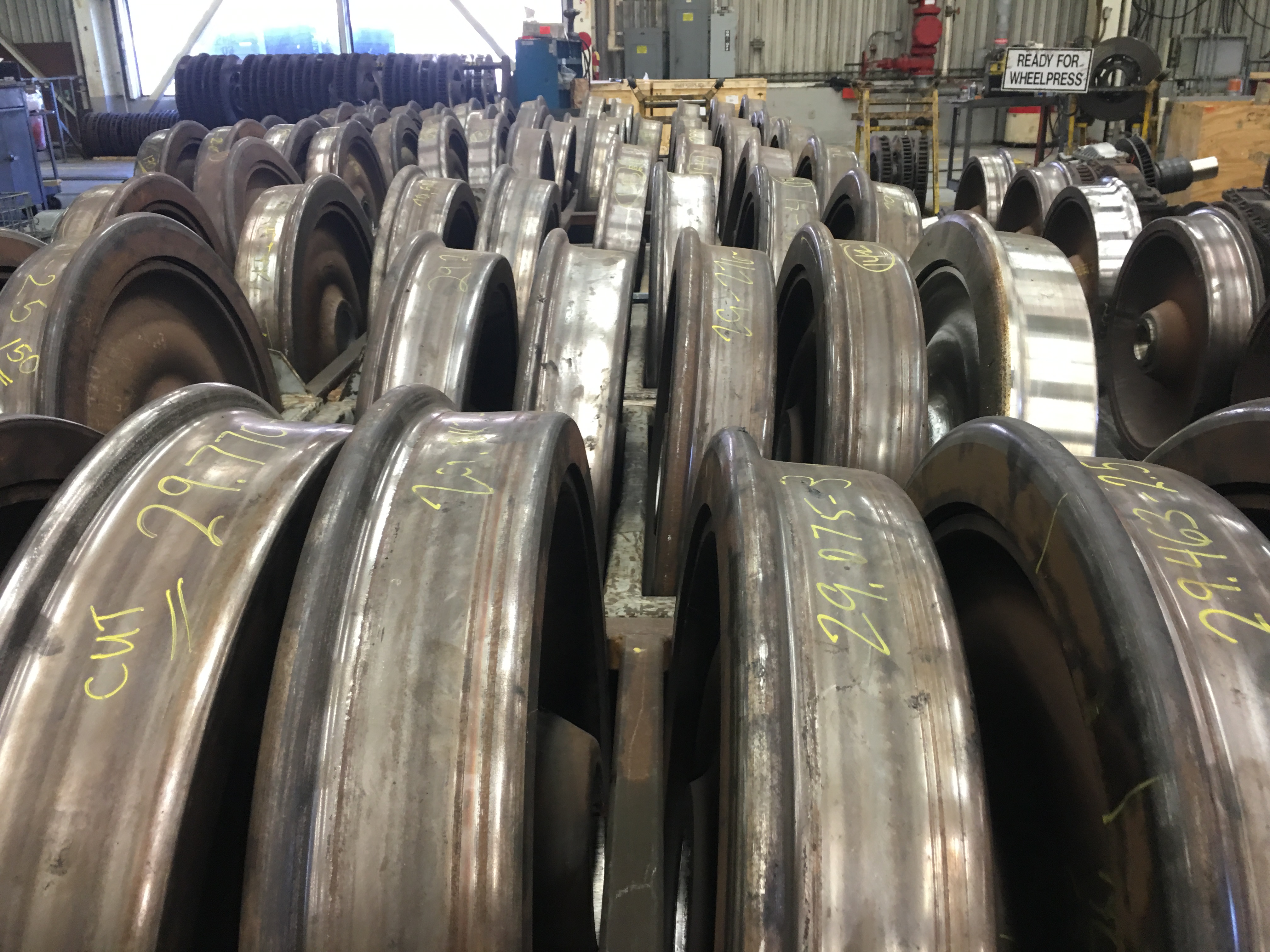
HOST: “I’m speaking with Ben Holland a managing engineer here at BART about the science of the screech and what BART is doing to try to provide you with a quieter ride. You mentioned we’ve seen some of the results, let’s talk about that. We’re talking about a few decibels here, maybe five decibels, maybe more but that can really make a huge difference in terms of how the ear perceives it. Talk about the results that we’re seeing and how significant they are.”
HOLLAND: “We’re actually seeing 15 to 20 Dba sound pressure level improvement and that really correlates well to the noise that we hear. Of course, people react differently to noise but overall the feedback from our customers has been very positive. They’ve noticed the improvement and our complaints have dropped dramatically as a result.”
HOST: “That’s a big difference too and I think one of the ways people can notice is they can actually have a conversation on our trains, maybe even in a tunnel where before that was a real challenge for some folks.”
HOLLAND: “For sure, tunnels are definitely the worst locations just simply because the sound reverberates off the walls of the tunnel and then reverberates on the walls of the car and back and forth and there’s no place for the sound to go. Tunnels have always been a challenge for BART and now you’re right you can basically have that conversation maybe not as if you’re in your living room but it’s still a much better experience.”
HOST: “As I understand BART has been studying this for years and went so far as to do some sound mapping of the system. Tell me about that and what was found.”
HOLLAND: “My understanding is that the track department has been doing routine noise monitoring tests for several years both on the cars and in our neighborhoods. From the reports that I’ve seen now that we have transitioned a significant number of wheels to the new profile, the system is generally quieter and some of the previously unbearable locations are actually now much quieter.”
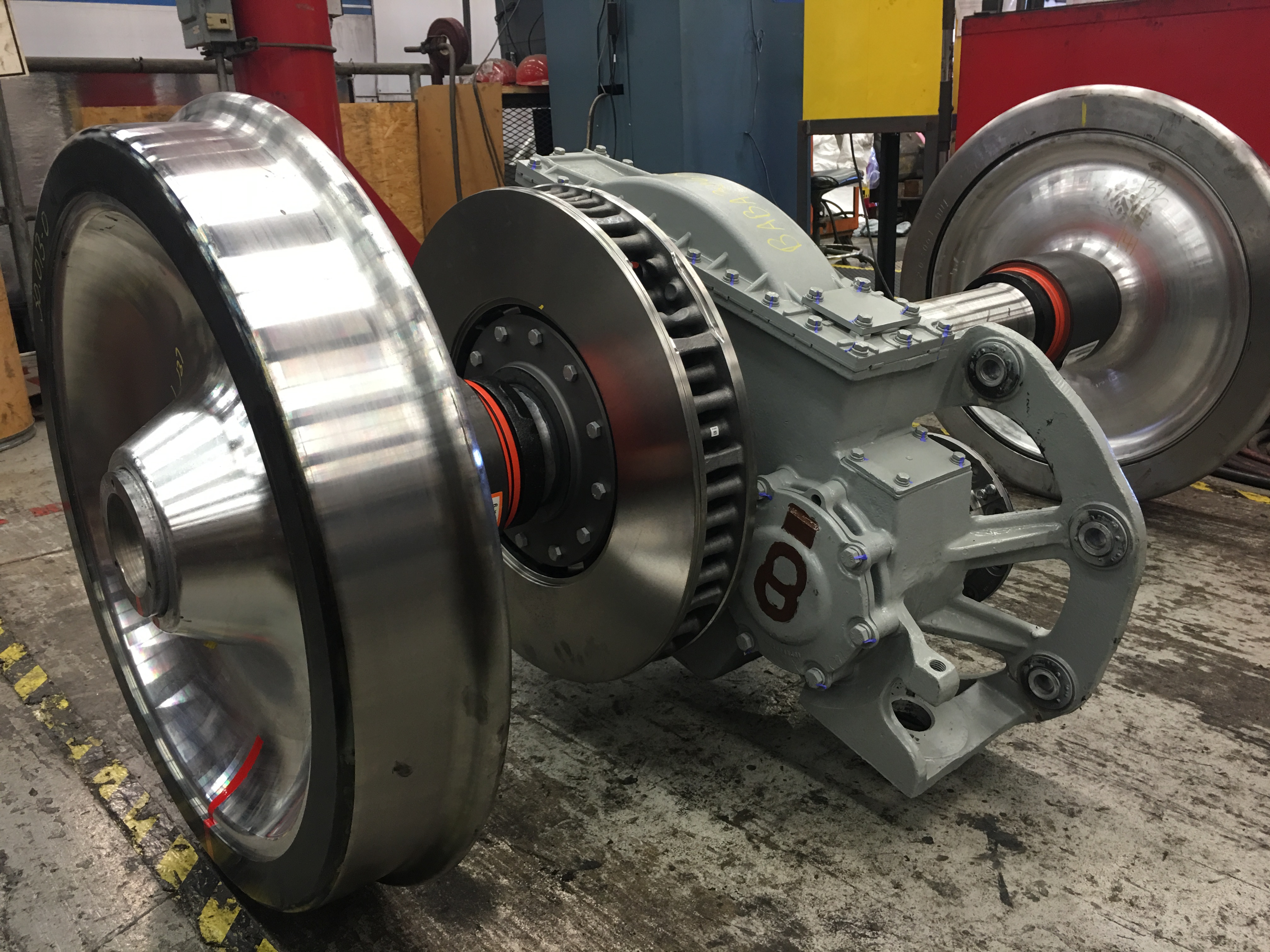
HOST: “That’s just a huge difference, especially in those key locations. As I understand, some of the design of this new wheel profile really traces its roots back to the Fleet of the Future. We know the new cars are going to have the new wheel profile but there was also some effort from Bombardier in terms of design and that really helped the process in terms of developing this new wheel profile. What can you tell me about that?”
HOLLAND: “At first it seemed that Bombardier was just going to continue and be content with our original wheel profile. The risk was perceived to be low for them, it wasn’t a contractual requirement that they go to a new wheel profile. But after about a year into the design process, we learned that in fact they had asked their experts in Germany to look at the wheel profile to see if there was anything that could be improved and in fact they did. They came out and they looked at our system and examined new rails, new wheels, worn wheels, worn rails, and really found that, we call it two-point contact, but they observed this phenomena of two-point contact was prevalent so they realized, yes there was probably something they could do. They went back and did some analysis and over several iterations eventually settled on a BT-3 wheel profile. It is a unique, computer-generated profile that optimizes the wheel and rail interaction and for the most part it’s successful in achieving single-point contact between the two.”
HOST: “And that really is the key is that point of contact and really trying to limit the damage, the corrugation, that occurs because of that. That’s a term we’ll get into later. That really is the big impact in this isn’t it, how the wheel interacts with the rail and even a subtle difference can go a long way in how it’s perceived by our riders?”
HOLLAND: “That’s correct. Corrugation is a complicated piece. We know with two-point contact it’s a major contributor to the formation of corrugation. We certainly believe that by going to this new wheel profile we’re going to have a dramatic reduction in the formation of corrugation and therefore also the corresponding major reduction in noise.”
HOST: “So Bombardier comes up with this new wheel profile, they use this new computer modeling that wasn’t even available a few years ago to come up with it, it’s quite a development but that’s not the end of it. From there, BART goes into action, we do all kinds of testing and that testing was really with an eye towards safety and making sure that we we’re compromising anything when it came to the quality of the ride, the noise of the ride, but also the safety of the ride.”
HOLLAND: “Right. In the case of a wheel profile change it’s actually a very rare thing for any railroad to consider so to ensure that there were no doubts about the believability of the Bombardier simulations, BART hired world-class experts to instrument a rail car. We got instrumented wheel sets that monitor just about every aspect of the wheels and we ran that car and those wheels all over our system to really collect as much data about that wheel-rail interaction so we could understand the effectiveness of that new wheel profile. Those consultants then analyzed all that data. They actually created their own independent model to corroborate the Bombardier simulations and they were able to do that. We also had to consider our special trackwork. Throughout the BART network we have frogs and switches and other special track work that help the trains negotiate from one track to another and into yards and pocket tracks and these other things. Over the years we had developed special trackwork to accommodate our cylindrical profile so we just needed to make sure we were going to have good interaction between the special trackwork the BT-3 profile. That you could say effort to go through and analyze the Bombardier proposal really was a significant effort for BART. It took a couple of years, it took quite a bit of money and it was a very thoughtful effort to get us to that decision point. It’s a huge decision as I said for any railroad. Certainly, a huge decision for BART and one that’s even being watched by many people in the industry worldwide. So, we continue monitor very closely how the wheels and rails are wearing because we want to be able to ensure not only was that decisions a good one when we made the decision but does the decision continue to be a good one as we transition the fleet to the new profile.”
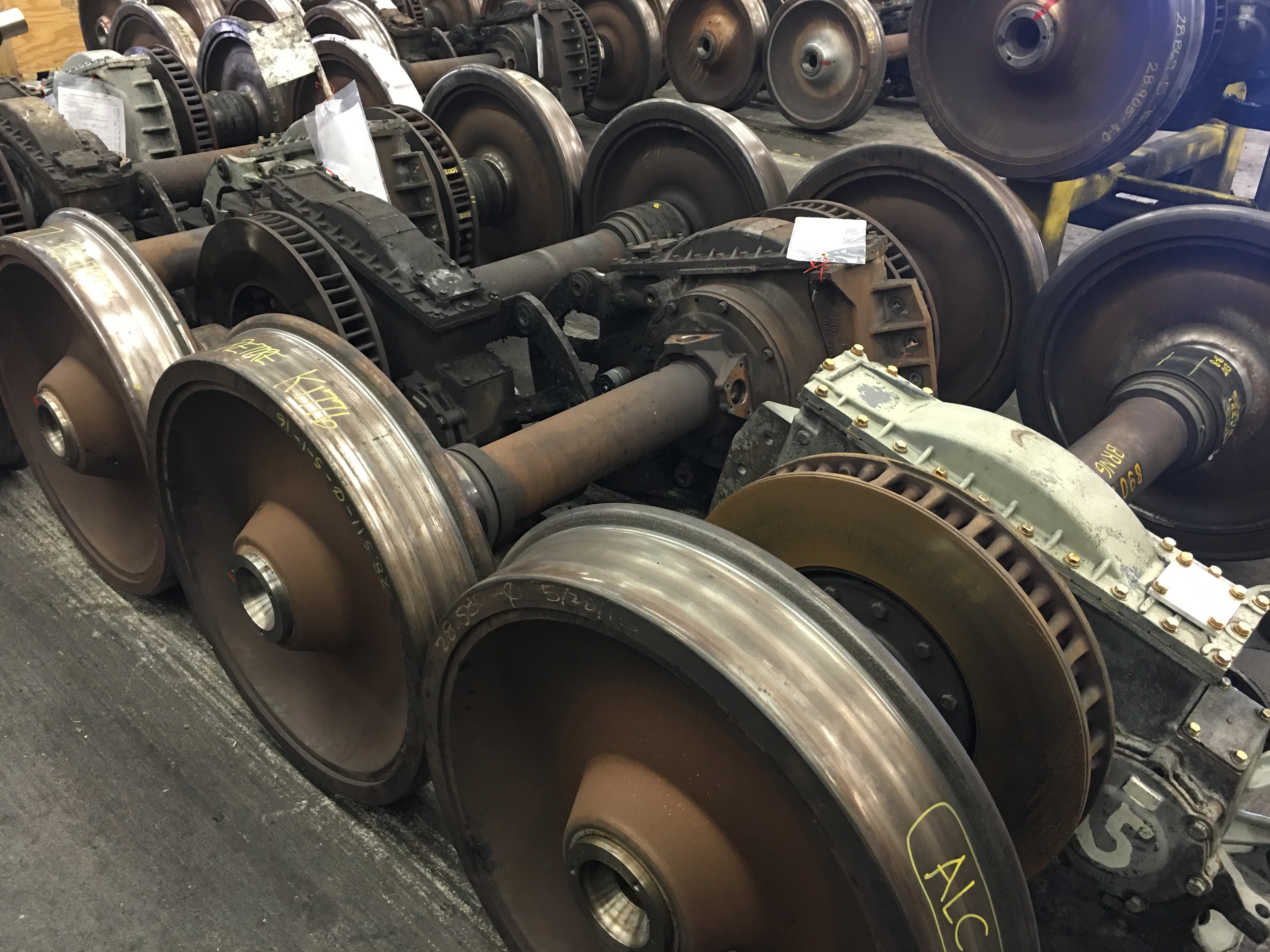
HOST: “The bottom line at this point at least: we’re providing a quieter ride but we’re not sacrificing anything when it comes to safety.”
HOLLAND: “Certainly that is absolutely correct. Our first and foremost thought is to ensure that we have safe operation, in fact that was the main consideration of the consultants. They weren’t even considering whether or not the wheel profile was going to be quieter. Their focus wasn’t in anyway on the comfort of the passengers but primarily what’s the ride quality of the new profile relative to industry standards and there’s some pretty sophisticated physics associated with understanding whether or not those interactions are safe. Everything was proven to be well within industry norms and well within the safe limits as prescribed by known industry practice.”
HOST: “I’m speaking with Ben Holland a managing engineer here at BART about the science of the screech. Ben, we’ve talked a lot about the wheel profile but that really is only half of the equation. The other part of course that’s equally important is the rail and BART’s taking action when it comes to trying to get our rails to interact in the best way possible with this new tapered wheel profile. Tell us what’s happening on that front.”
HOLLAND: “Our track department has begun an equally ambitious effort to grind the rails to maximize the benefit of the new wheel profile. It’s our understanding the transition will take up to six years for the wheel and the rails to in essence wear together. During that time, we’ll continue to monitor and adjust our efforts to make sure that we’re doing everything possible to make sure we have the best transition.”
HOST: “We talked about corrugation a little bit earlier but that really is the concern here. Describe a little bit for someone who maybe has never heard that word what exactly is corrugation and how does it come into play when we talk about noise?”
HOLLAND: “Corrugation is a very complicated phenomenon. What causes corrugation at one railroad may not cause corrugation at another railroad and usually that’s because it takes a combination of factors for it to form. At BART we know our cylindrical profile results in the two-point contact and that’s for sure an instigator of corrugation. Two-point contact means that likely one of the two points is fixed while the other one is slipping and that reversal of sticking and slipping results over time in the formation of corrugation. But there are also many other possible reasons for corrugation. It could be in how the rail is supported; it could be on either soft supports or firm supports. BART has experimented with many different ways of supporting the rail. The spacing between the supports can have an effect. There’s a vibration dynamic aspect of the speed of the train relative to its weight. Its whether the cars are acceleration or breaking so there’s those dynamic forces. Lots of many different, almost uncertain factors that all come into play and really, we’ve had many different experts come in and say, ‘oh, I know why you have corrugation,’ and they’ll say, ‘well it’s because of this,’ and then we’ll have another guy come in and say, ‘oh, you have corrugation because of something else’ so on and so forth. I just want to make clear we know that the two-point contact is a major contributor. We expect that by addressing that major contributor we’ll have a significant impact in reduction to corrugation. But does that mean corrugation will never come back to the district? We can not say that.”
HOST: “And that’s realistic too. Does the new wheel profile, does that help? Does that in a way, certainly not eliminate, but does it make it a situation where the corrugation doesn’t become as significant as quickly?”
HOLLAND: “Definitely. What we’ve observed so far at least is that the formation and growth of corrugation is happening over a much, much slower period of time. At the very beginning we talked about the roles of the vehicle maintenance and the track maintenance. The track guys are monitoring certain key sections of the rail and part of that is to understand what is that growth of corrugation over time, what is causing that growth of corrugation. There are other remedies that can be applied, it’s not just this wheel-rail profile interaction it can also be affected through friction modifiers either applied directly to the wheels or the rail. It’s a complicated phenomenon, again it’s something that we as a team, both the rail side and the vehicle side are looking at to try to make sure we can improve things for our customers.”
HOST: “I would imagine with the rail-grinding process there are challenges with that if for no other reason than we have a system that extends for some 112 miles. We have rail that goes in both directions so double that and yet when can it actually occur? We have a very limited time when it comes to when trains are not running when this sort of work can take place.”
HOLLAND: “That’s a great question. Where we find the corrugation the most and the worst is in places, we call it direct fixation. That means the track or the rail is mounted directly to concrete slab. That’s going to be in our tunnels, that’s going to be at our stations, that’s going to be on our aerial structure. That actually makes up about 54, 55% of the system. So over half of our system is direct fixation and prone to corrugation. It’s worse in the tunnels to our riders, to the people inside the trains, and it’s worse to our neighbors by the aerial structures because the sound just rings out into the neighborhoods free. By solving the corrugation issue, it can make a lot of people hopefully much happier.”
HOST: “You mentioned earlier, and I thought this was really interesting, for what BART is doing here this is something that’s pretty rare in the transit industry. You don’t see a lot of agencies taking this step of adapting a new wheel profile, changing the way that the wheel and rail interact. How difficult of a decision was it for BART to go in this direction if it’s something that’s so rare in the industry.”
HOLLAND: “That was one of the reasons why we were both compelled and it seemed appropriate that we would take the step of hiring these world class consultants to come in and verify that all the simulations and predictions were correct and not just presume that they were. Also, in terms of documenting the history of how that decision was made to ensure that we examined the risk. We came to what we call a decision point and actually prepared a decision document that most of the heads of BART operations agreed to and signed, almost like a Declaration of Independence. But there was a decision document that required all of our chiefs to really agree that this was in fact a correct decision. It was only then that we decided to move forward. That moving forward included the responsibilities for the track side of the house and the vehicle side. The vehicle side we were going to monitor a certain number of vehicles and the track side was going to monitor certain key sections of the rail. We were going to meet quarterly to make sure that the exchange of information between these two departments, which historically in most railroads never communicate, but we have a very good working relationship and we make sure that we communicate so the original decision has been validated and continues to be validated at each quarterly meeting and we make sure that our system is safe and good for our customers.”
HOST: “That communication has to be so critical and I like what you said, sort of a declaration of independent from noise, if you will for BART. It’s a huge step. Now that this process is well underway, more than half of the wheels have been switched over to the new profile, are outside transportation agencies looking at BART and taking a look at what we’re doing and maybe there’s an opportunity for others to learn from what we’re going through?”
HOLLAND: “I can’t speak for other agencies but I do know that this is a very important topic in the wheel-rail and the railroad industry. Annually, there’s a wheel-rail interface conference in fact that in essence covers this exact topic and you’ll have representatives from freight railroads, you’ll have representatives from passenger railroads and there are still a handful of railroads that have a cylindrical profile. Chicago, for example, still has a cylindrical profile and they were very interested at just the most recent wheel-rail interaction conference to understand what did BART do, what were the steps BART took, is this something that can help them both from a maintenance cost but also for customer performance. Muni, San Francisco Muni is transitioning their fleet to a tapered profile as we said and they’re looking at what could be the potential benefits. There are always pros and cons of any decision and you have to know both. We feel that on our side at BART we took the correct steps to understand what those risks are, understand what our benefits are, and are monitoring and taking the proper steps and we hope we can be an example to others in the industry.”
HOST: “It’s already paying off with the number of complaints about noise going down at a pretty significant rate. As we look forward now, progress has already been made but obviously there’s still work to be done. Give us a sense for timeframe here, especially when it comes to the wheel profile, how long until we get all of our legacy fleet converted to the new wheel profile?”
HOLLAND: “So Chris, we’re about 54, 55% of the way through the fleet. At the current rate of our conversion we expect to be over 90% by December of this year, 2018. That’ll leave some handful of stragglers that will likely get completed over the next few months after that. So, we’ll have most of the fleet done this year.”
HOST: “Then of course the Fleet of the Future already has this so it sounds like BART riders will have to get used to a quieter ride.”
HOLLAND: “That’s for sure, for sure. There is going to be some transition time. There’s a six-year kind of overall transition that the whole system has to go through where we really monitor where the new wear points are versus where it was wearing in the past. It may take several years to achieve the ultimate goal but I suppose you could say the 80-20, we’re going to get 80% of the benefit right up front in terms of noise and wear improvement.”
HOST: “Ben Holland, managing engineer here at BART at the forefront of the fight against the screech. Thanks so much for taking time to speak with us.”
HOLLAND: “Yes, thanks Chris appreciate the time.”
HOST: “And thank you for listening to ‘Hidden Tracks: Stories from BART.’ You can listen to our podcasts on SoundCloud, iTunes, Google Play, Stitcher, and of course at our website BART.gov/podcasts.”
